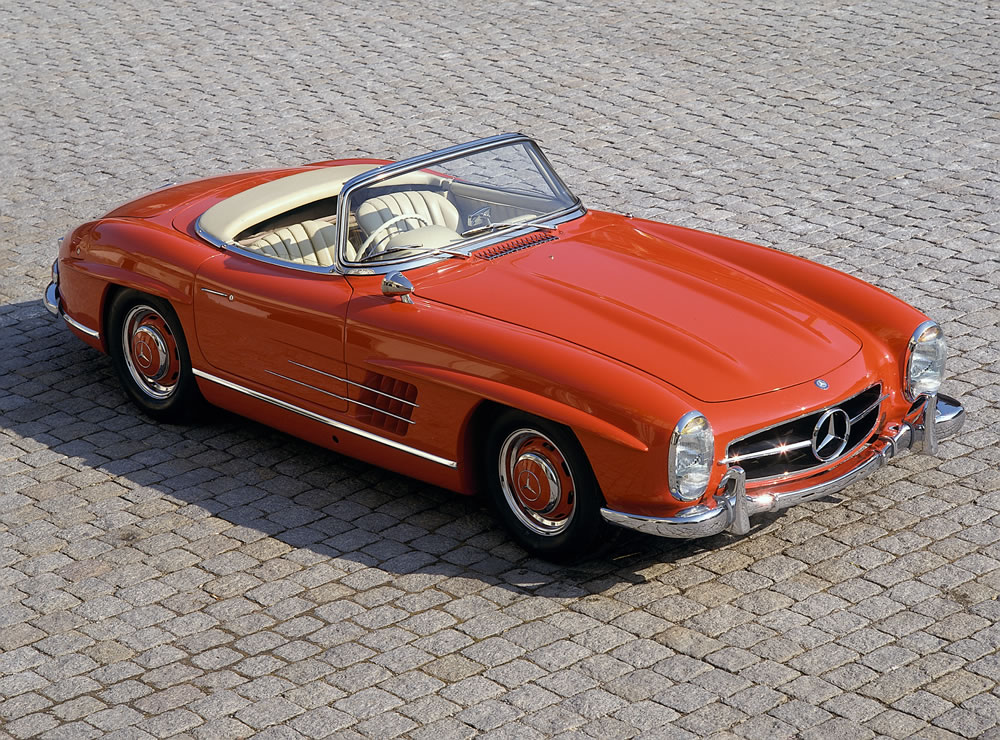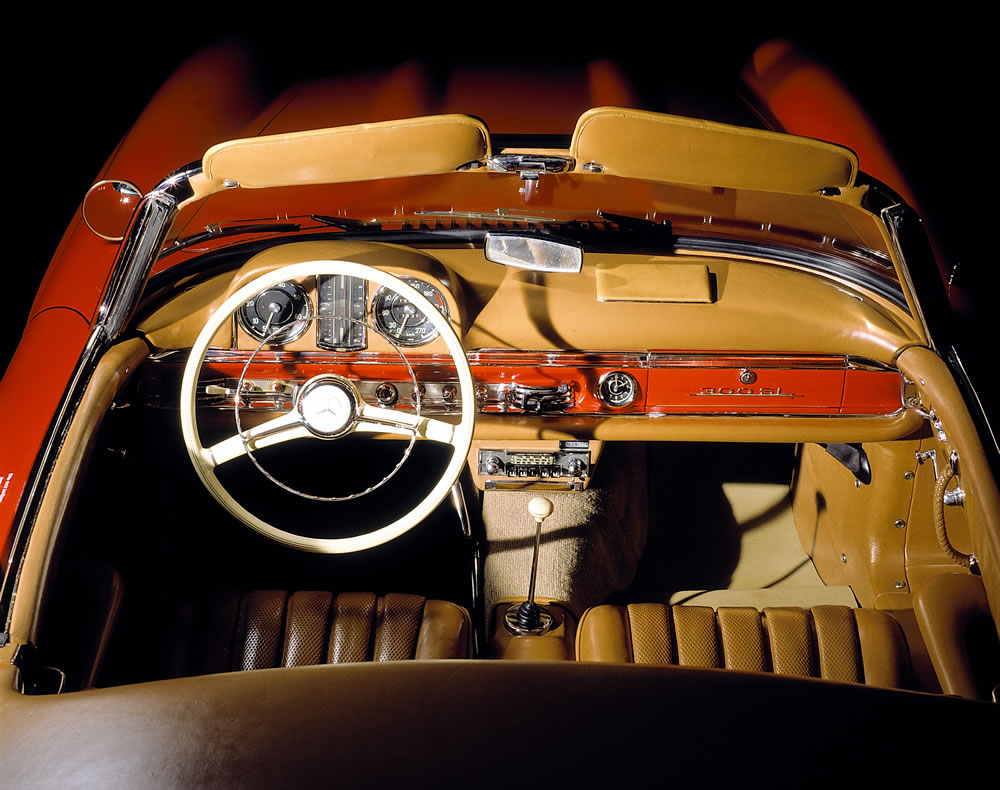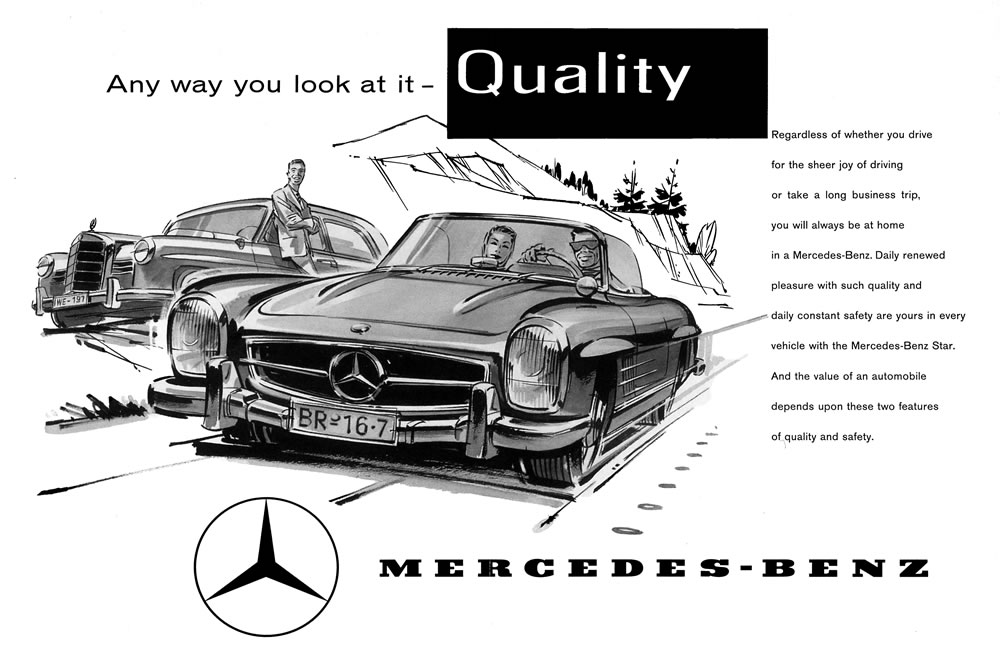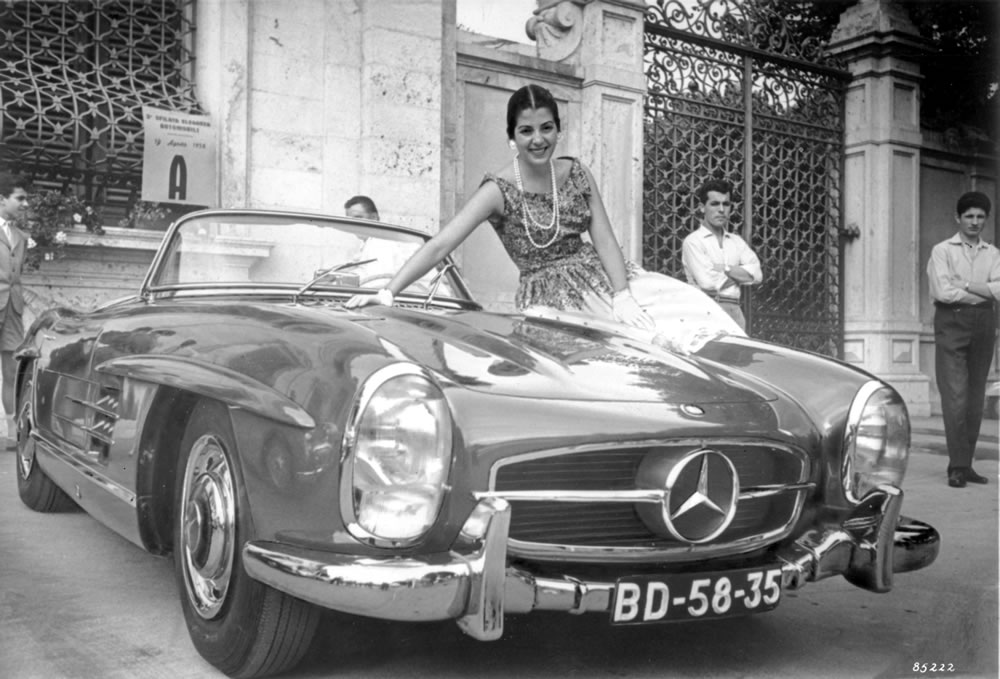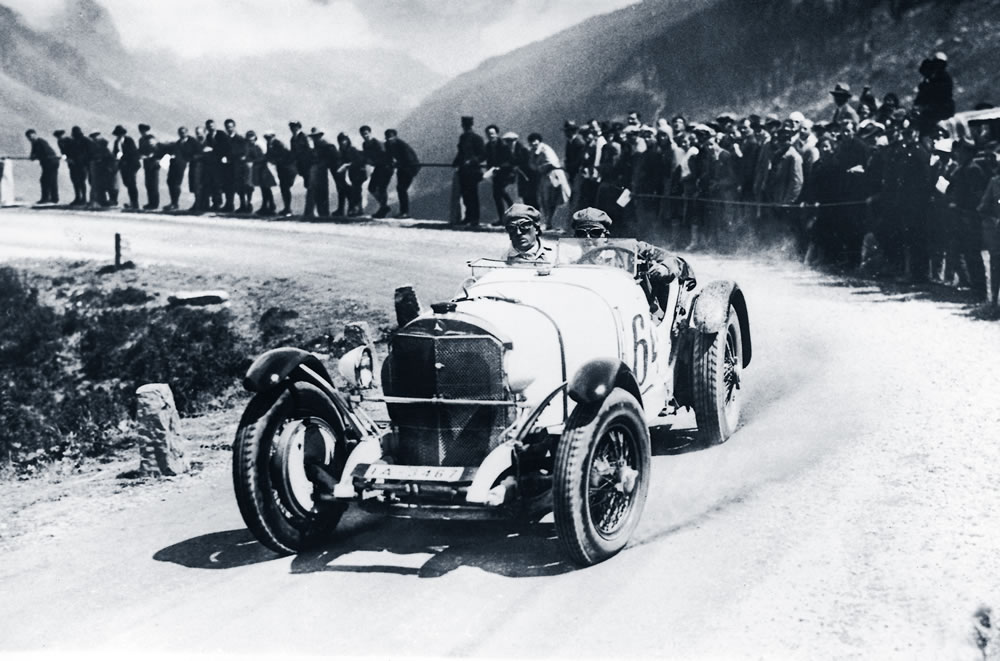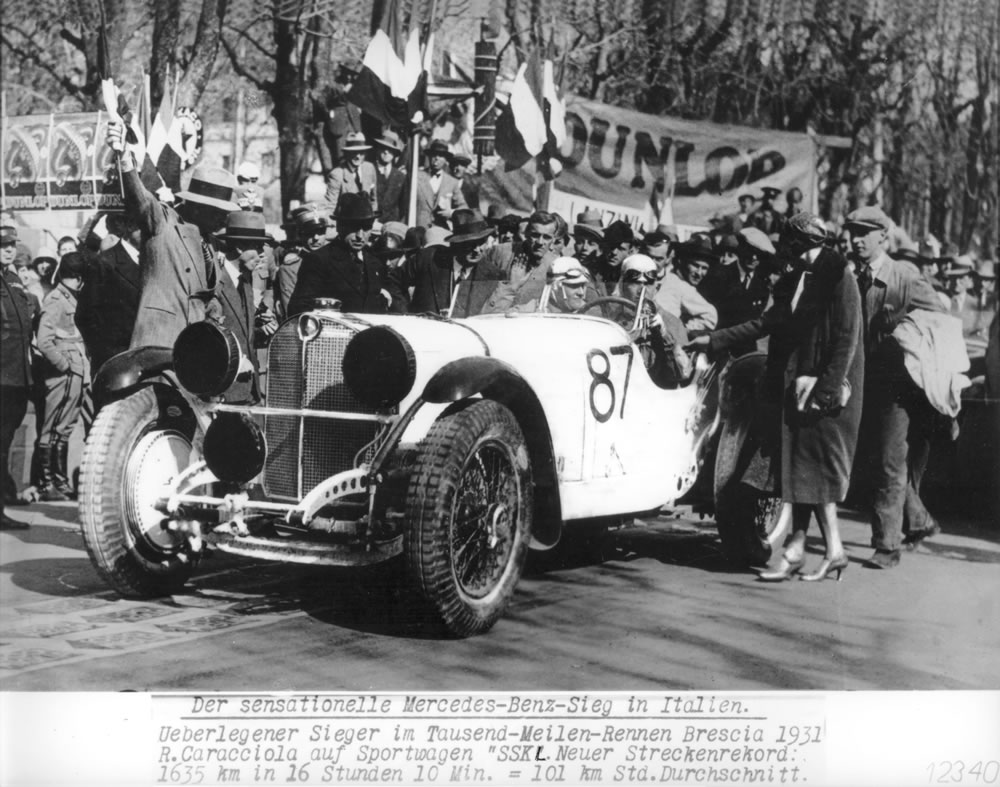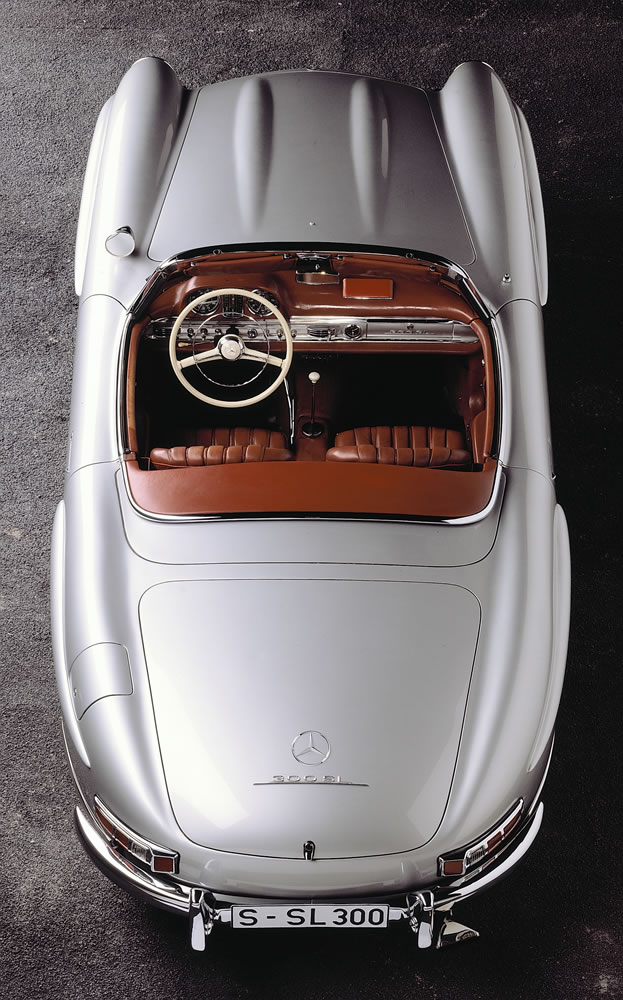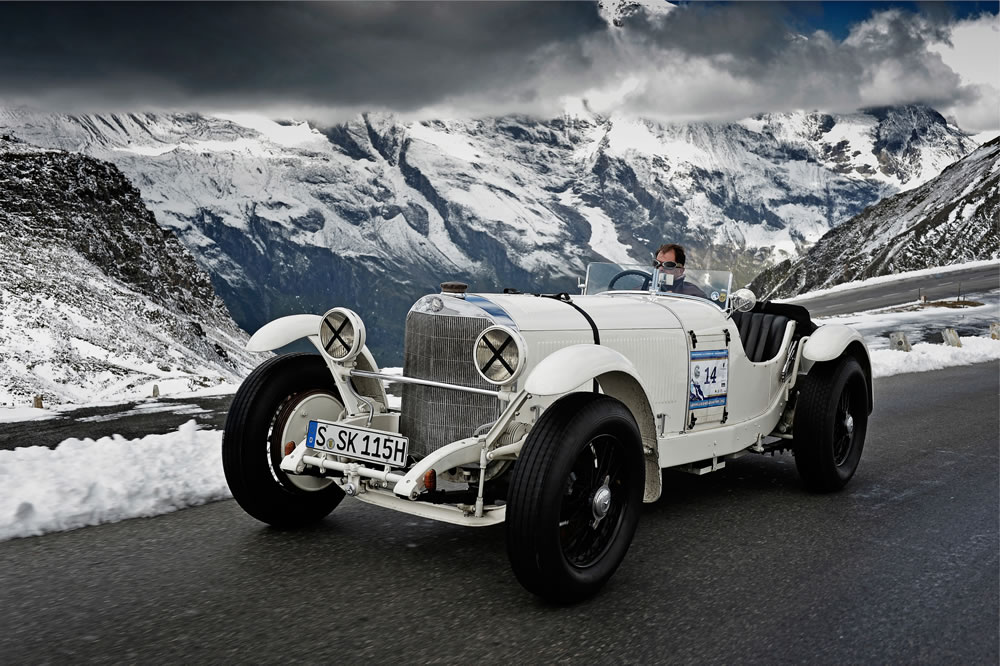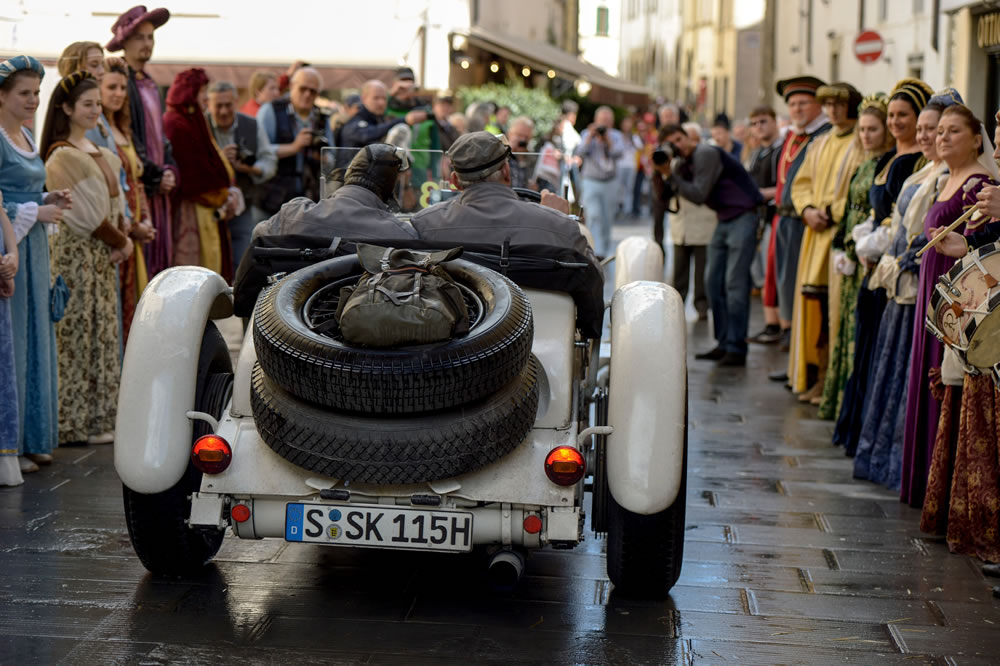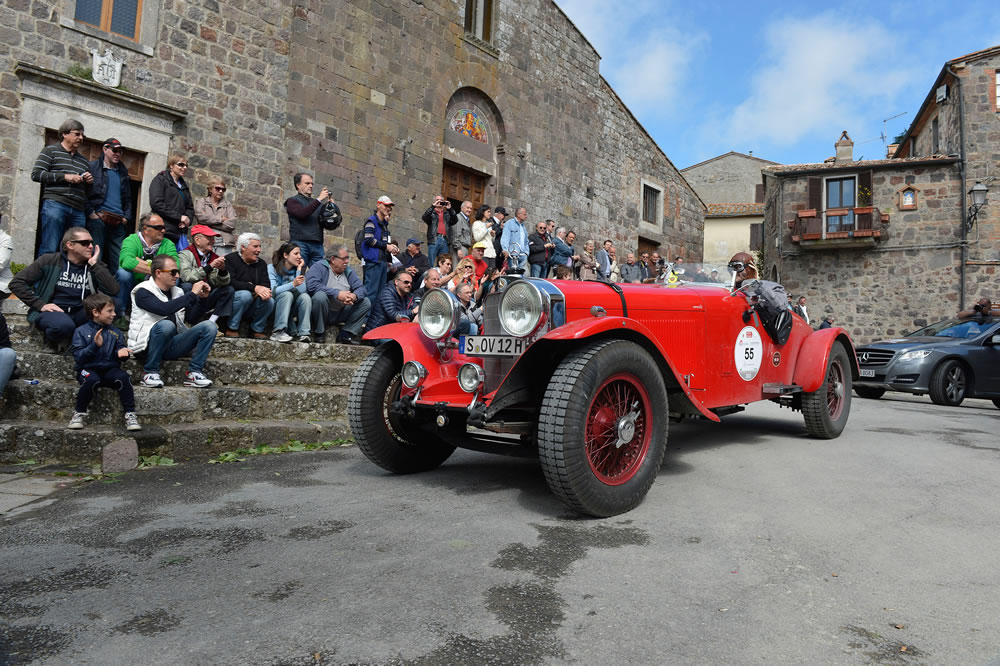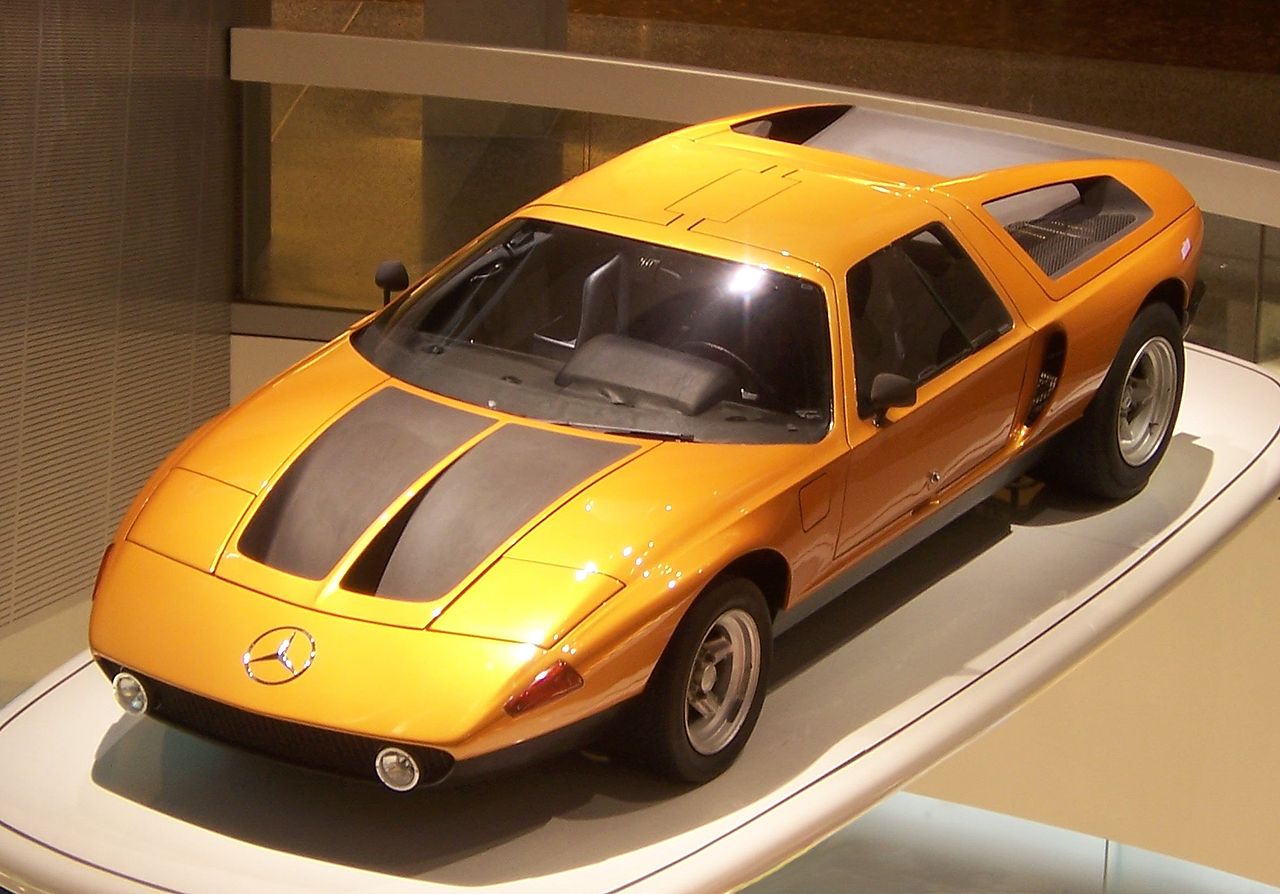Mercedes-Benz Classic is bringing the legendary C 111 back on the road as part of the 2014 Silvretta Classic rally in Austria. This research vehicle will be taking part in the regularity race through the Montafon valley as a unique V8-engined variant. The 3.5-litre V8 C 111 dates from 1970, one year after the Gullwing sports car designed to test the Wankel rotary engine made its début at the International Frankfurt Motor Show IAA. Being held on the Silvretta High Alpine Road and other mountain routes in Austria’s Alps during July 2014, the 17th Silvretta Classic will see the C 111 and other outstanding vehicles from Mercedes-Benz representing the ongoing interplay between sportiness and innovation throughout motor racing history. To celebrate 120 years of motor sport history at Mercedes-Benz, the exclusive line-up at the Silvretta Classic rally will include a 1928 SSK racing sports car driven by brand ambassador Karl Wendlinger and a Mercedes-Benz 300 SL Roadster (W 198).

Mercedes-Benz C 111 Research Vehicle
First held in 1998, the Silvretta Classic rally in Montafon is one of Europe’s most important events for classic and vintage cars. On 3 July 2014, more than 150 selected vintage vehicles will be setting off from the village of Partenen in Austria for the 17th regularity race here, which finishes on 6 July.
This summer, the C 111 from the Mercedes-Benz Classic collection stands out in a high-calibre field of participants: 45 years since the research vehicle was premiered, this visionary Mercedes-Benz gullwing sports car designed to field-test the Wankel rotary engine will be returning to the road for the Silvretta Classic.
In contrast to the other C 111 vehicles that Mercedes-Benz constructed with the rotary engine invented by Felix Wankel (six with a three-rotor engine in 1969 and six with a four-rotor engine in 1970), this C 111 has a rear-mounted reciprocating engine. When building the prototype in 1970, Mercedes-Benz engineers in Sindelfingen implanted a 3.5-litre, V8 production engine into a second-generation C 111 chassis to enable direct comparisons to be made with the four-rotor Wankel engine. This V8 engine was first used in 1969 in the luxury Mercedes-Benz 300 SEL 3.5 (W 109) and 280 SE 3.5 Coupé and Cabriolet (W 111) models, and also delivered a sporty driving experience in the 350 SL (R 107) launched in 1971.
The engineers who built the prototype in Sindelfingen have now repeated this move by installing a 3.5-litre M 116 V8 engine in the original chassis from 1970. As well as bringing the excitement of the technologically and aesthetically ground-breaking C 111 back on the road, this genuine reconstruction of a one-off vehicle from 1970 represents the interplay between sportiness and innovation which has always been a hallmark of the Mercedes-Benz brand. Successful racers from 120 years of Mercedes-Benz motor sport history embody this key theme, as do visionary research vehicles like the C 111 and exclusive production sports cars such as the 1957 Mercedes-Benz 300 SL Roadster and the upcoming Mercedes-AMG GT (C 190).

Mercedes-Benz 300 SL Roadster (W 198 II series, 1957 to 1963), 1960
Innovation and a tradition of sporting excellence
“The Silvretta Classic rally in Montafon exemplifies in a special way the close link between innovative technology and sporting excellence in the history of the Mercedes-Benz brand,” says Michael Bock, Head of Mercedes-Benz Classic. “During this rally, the C 111, a 300 SL Roadster and an SSK from the Mercedes-Benz Classic collection will travel the beautiful, high alpine roads of the Montafon valley as testimony to the outstanding feats of engineering and race successes of previous decades. The 5th Silvretta E-Car Rally is taking place at the same time on the same route. This event is for the latest vehicles with alternative drive systems. Mercedes-Benz is thus supporting a unique platform for dialogue between the motor car’s fascinating past and its exciting future,” adds Bock.
Automotive “summit meeting”
The Silvretta Classic stands out on the calendar of exclusive events for classic and vintage cars not least due to the unique landscape of the Austrian Alps. Back in 1956, Hans Eberhard Friedrich was full of praise for the view from the Silvretta High Alpine Road in his Mercedes-Benz travelogue about rallies in Austria and the Eastern Alps (Sternfahrten Österreich und Ostalpen): “This famous road terminates […] at an altitude of 2,032 metres at the Bielerhöhe Pass where one enjoys a view that is reminiscent of the most beautiful in Switzerland, taking in the gigantic peaks of the Silvretta Group and the Rätikon mountain range.”
The Silvretta Classic, which was established by special interest publisher Motor Presse Stuttgart as a regularity race and a test of reliability, begins on 3 July 2014 (Thursday) in Partenen. From there, the first stage of 110 kilometres takes Friedrich’s high alpine road up to the Bielerhöhe Pass and onwards to Schruns. On 4 July (Friday), the rally covers the 290 kilometres to Gaschurn. Day three (Saturday, 5 July) is a 127-kilometre stage through the state of Vorarlberg culminating in the Grand Prix of Vandans. The rally concludes with a programme of supporting events on 6 July (Sunday). In total, some 150 classic cars in six classes are set to line up at the start.

Mercedes-Benz Classic at the Grossglockner Grand Prix 2012. Mercedes-Benz type SSK (1928)
Mercedes-Benz Classic vehicles taking part inthe 2014 Silvretta Classic rally in Montafon
Mercedes-Benz SSK 27/170/225 hp (W 06, 1928)
The SSK (W 06) model is the most exclusive and alluring of the six-cylinder, supercharged sports cars belonging to the Mercedes-Benz S-Series. The model designation stands for “Super Sport Short” (in German), alluding to both the car’s particularly sporty character and its shortened wheelbase. In the summer of 1928, works driver Rudolf Caracciola won the Gabelbach, Schauinsland and Mont Ventoux races in the brand-new SSK at the first attempt. In 1930 and 1931, he won the European Hill Climb Championship at the wheel of the SSK. The lighter and yet more powerful version from 1931, which was also known as the SSKL (German abbreviation for “Super Sport Short Light”), also scored some spectacular victories, one of the most outstanding being in the legendary 1000-mile Mille Miglia race. This arduous road race from Brescia to Rome and back was won by Rudolf Caracciola driving an SSKL in April 1931. He thus became the first non-Italian driver ever to win the race.
Technical data – Mercedes-Benz SSK (W 06, road version)
- Production period: 1928-1930
- Cylinders: 6/in-line
- Displacement: 7,065 cc
- Output: 125 kW (170 hp), with supercharger 165 kW (225 hp)
- Top speed: 192 km/h

Mercedes-Benz 300 SL Roadster (W 198 II, 1957 to 1963)
Mercedes-Benz 300 SL Roadster (W 198, 1957-1963)
Mercedes-Benz unveiled the 300 SL Roadster at the Geneva Motor Show in March 1957 as successor to the gullwing 300 SL Coupé. In terms of engineering, the convertible sports car closely resembled the coupé model, although modifications to the space frame permitted the installation of conventional doors. The chassis with a single-joint swing axle and low pivot was improved by the addition of a compensating spring for the first time in the 300 SL Roadster. From 1958, the Roadster was also optionally available with a removable hardtop. Mercedes-Benz engineers derived the 300 SLS racing variant from a series-produced 300 SL Roadster. In it Paul O’Shea won the Sports Car Club of America’s National Sports Car Championship in 1957 in Class D. The production of the 300 SL Roadster ended in 1963 with a total of 1,858 of these very exclusive sports cars having been built.
Technical data – Mercedes-Benz 300 SL Roadster (W 198)
- Production period: 1957-1963
- Cylinders: 6/in-line
- Displacement: 2,996 cc
- Output: 158 kW (215 hp)
- Top speed: up to 250 km/h

Mercedes-Benz C 111 Research Vehicle
Mercedes-Benz C 111 experimental vehicle with V8 engine (1970)
Mercedes-Benz presented the C 111 at the International Frankfurt Motor Show IAA in September 1969. With its extreme wedge shape and gullwing doors, the research vehicle had a glass-fibre-reinforced plastic body and was powered by a three-rotor Wankel engine with an output of 206 kW (280 hp). This futuristic sports car could reach a speed of up to 270 km/h. The following year, a revised version of the C 111 was shown at Geneva – but now with a four-rotor Wankel engine delivering 257 kW (350 hp). This version of the C 111 could accelerate from 0 to 100 km/h in 4.9 seconds and reach a top speed of 300 km/h. It was this second version of the research vehicle that served as the basis for a V8 variant of the C 111 containing the M 116 series engine (147 kW/200 hp), which Mercedes-Benz engineers and technicians used for the purposes of comparison with the rotary-engined sports car. Despite numerous orders, the C 111 remained an experimental vehicle and never entered series production. Mercedes-Benz instead went on to develop a series of record-breaking vehicles based upon it: the C 111-II D (1976) and the C 111-III (1977-1978, both with a five-cylinder diesel engine) and the C 111-IV (1979, V8 petrol engine with turbocharging).
Technical data – Mercedes-Benz C 111 with V8 engine
- Production period: 1970
- Cylinders: V8
- Displacement: 3,499 cc
- Output: 147 kW (200 hp)
Mercedes-Benz Classic brand ambassador at the Silvretta Classic Rally Montafon 2014
- Karl Wendlinger
- Born 20 December 1968 in Kufstein, Austria
Karl Wendlinger’s motor sport career began in go-karting at the age of 14. In 1989, he won the German Formula 3 Championship. In 1990 and 1991, the Austrian was a member of the Mercedes Junior Team, along with Michael Schumacher and Heinz-Harald Frentzen, and competed in the sports car world championship. In 1991 he moved on to Formula 1. From 1994 Wendlinger drove for the Sauber-Mercedes team together with Heinz-Harald Frentzen. Racing assignments in the DTM, Formula 3000 and the Le Mans 24-hour race followed. His most outstanding successes on the racetrack include winning the FIA GT Championship (1999), 1st place in the 24 Hours of Le Mans in the GTS Class (in the same year), overall victory in the 24 Hours of Daytona in 2000 and a second-place finish in the 24-hour race on the Nürburgring (2003). From 2004 to 2011, Karl Wendlinger competed for various teams in the FIA GT Championship; with Jetalliance Racing he became runner-up in 2007.
